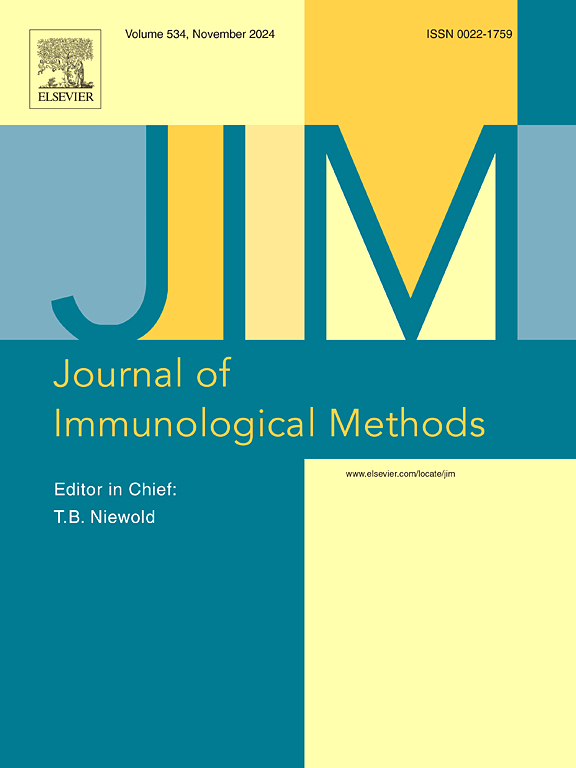Development of a novel anti-PEG antibody assay enabling investigation of potential immunogenicity triggered by the PEG moiety of biotherapeutics
IF 1.6
4区 医学
Q4 BIOCHEMICAL RESEARCH METHODS
引用次数: 0
Abstract
Polyethylene glycol (PEG) has been widely used in household products from skin care and cosmetics, to baby wipes and cleaners, as well as protein biotherapeutics. More recently, PEG has become a critical component of lipid nanoparticles (e.g., LNP or Accurin platforms) used to deliver small molecule and ribonucleic acid (RNA) therapeutics. A potential concern with therapeutics containing PEG is that the PEG moiety can induce anti-PEG antibodies that may impact patient pharmacokinetics (PK), safety and/or efficacy of the drug ((Ju et al., 2023), (Warren et al., 2021)). The accurate assessment of anti-PEG antibodies may be needed and their relationship to clinical PK, safety and efficacy mandates reliable bioanalytical methods with suitable specificity and sensitivity with characterization at the isotype level. Here we report the development of a novel multiplexed anti-PEG antibody sandwich-immunoassay, using an electrochemiluminescence (ECL) format to simultaneously detect major immunoglobulin (Ig) isotypes (IgM, IgG and IgE) of anti-PEG antibodies in human serum. As the initial step in the platform application's proof-of-concept (POC), we demonstrated that this first-ever multiplexed anti-PEG isotyping assay is highly specific with suitable sensitivities across all major immunoglobulin isotypes. Our holistic approach first focused on establishing critical assay components required for the multiplex format, followed by implementation of a sample pre-treatment procedure to optimize specificity and sensitivity. We then addressed non-specific matrix interference in the presence of potentially confounding factors, such as the high prevalence of pre-existing anti-PEG antibodies in human serum. This approach resulted in a specific and sensitive multiplex assay. Based on preliminary evaluation, the estimated assay sensitivities met regulatory expectations for clinical ADA assays (≤ 100 ng/mL). Notably, the estimated assay sensitivity for IgE isotypes of anti-PEG antibodies was ≤25 ng/mL, as determined using an IgE isotype specific anti-PEG antibody positive control.
开发一种新的抗PEG抗体检测方法,用于研究生物治疗药物中PEG片段引发的潜在免疫原性。
聚乙二醇(PEG)已广泛应用于家庭产品,从护肤和化妆品,到婴儿湿巾和清洁剂,以及蛋白质生物疗法。最近,PEG已成为脂质纳米颗粒(例如LNP或Accurin平台)的关键成分,用于递送小分子和核糖核酸(RNA)疗法。含有PEG的治疗方法的一个潜在问题是,PEG片段可以诱导抗PEG抗体,可能影响患者药代动力学(PK),药物的安全性和/或有效性((Ju等人,2023),(Warren等人,2021))。可能需要准确评估抗peg抗体及其与临床PK、安全性和有效性的关系,需要可靠的生物分析方法,具有合适的特异性和敏感性,并在同型水平上进行表征。在这里,我们报告了一种新的多路抗peg抗体三明治免疫分析法的发展,使用电化学发光(ECL)格式同时检测人血清中抗peg抗体的主要免疫球蛋白(Ig)同型(IgM, IgG和IgE)。作为平台应用概念验证(POC)的第一步,我们证明了这种首次多路抗peg同型分析具有高度特异性,对所有主要免疫球蛋白同型都具有合适的敏感性。我们的整体方法首先侧重于建立多重格式所需的关键分析成分,然后实施样品预处理程序以优化特异性和敏感性。然后,我们在潜在的混杂因素(如人血清中预先存在的抗peg抗体的高患病率)的存在下解决了非特异性基质干扰。这种方法产生了特异性和敏感性的多重分析。根据初步评估,估计的检测灵敏度符合临床ADA检测的监管期望(≤100 ng/mL)。值得注意的是,使用IgE同型特异性抗peg抗体阳性对照测定,对抗peg抗体IgE同型的估计检测敏感性≤25 ng/mL。
本文章由计算机程序翻译,如有差异,请以英文原文为准。
求助全文
约1分钟内获得全文
求助全文
来源期刊
CiteScore
4.10
自引率
0.00%
发文量
120
审稿时长
3 months
期刊介绍:
The Journal of Immunological Methods is devoted to covering techniques for: (1) Quantitating and detecting antibodies and/or antigens. (2) Purifying immunoglobulins, lymphokines and other molecules of the immune system. (3) Isolating antigens and other substances important in immunological processes. (4) Labelling antigens and antibodies. (5) Localizing antigens and/or antibodies in tissues and cells. (6) Detecting, and fractionating immunocompetent cells. (7) Assaying for cellular immunity. (8) Documenting cell-cell interactions. (9) Initiating immunity and unresponsiveness. (10) Transplanting tissues. (11) Studying items closely related to immunity such as complement, reticuloendothelial system and others. (12) Molecular techniques for studying immune cells and their receptors. (13) Imaging of the immune system. (14) Methods for production or their fragments in eukaryotic and prokaryotic cells.
In addition the journal will publish articles on novel methods for analysing the organization, structure and expression of genes for immunologically important molecules such as immunoglobulins, T cell receptors and accessory molecules involved in antigen recognition, processing and presentation. Submitted full length manuscripts should describe new methods of broad applicability to immunology and not simply the application of an established method to a particular substance - although papers describing such applications may be considered for publication as a short Technical Note. Review articles will also be published by the Journal of Immunological Methods. In general these manuscripts are by solicitation however anyone interested in submitting a review can contact the Reviews Editor and provide an outline of the proposed review.

 求助内容:
求助内容: 应助结果提醒方式:
应助结果提醒方式:


